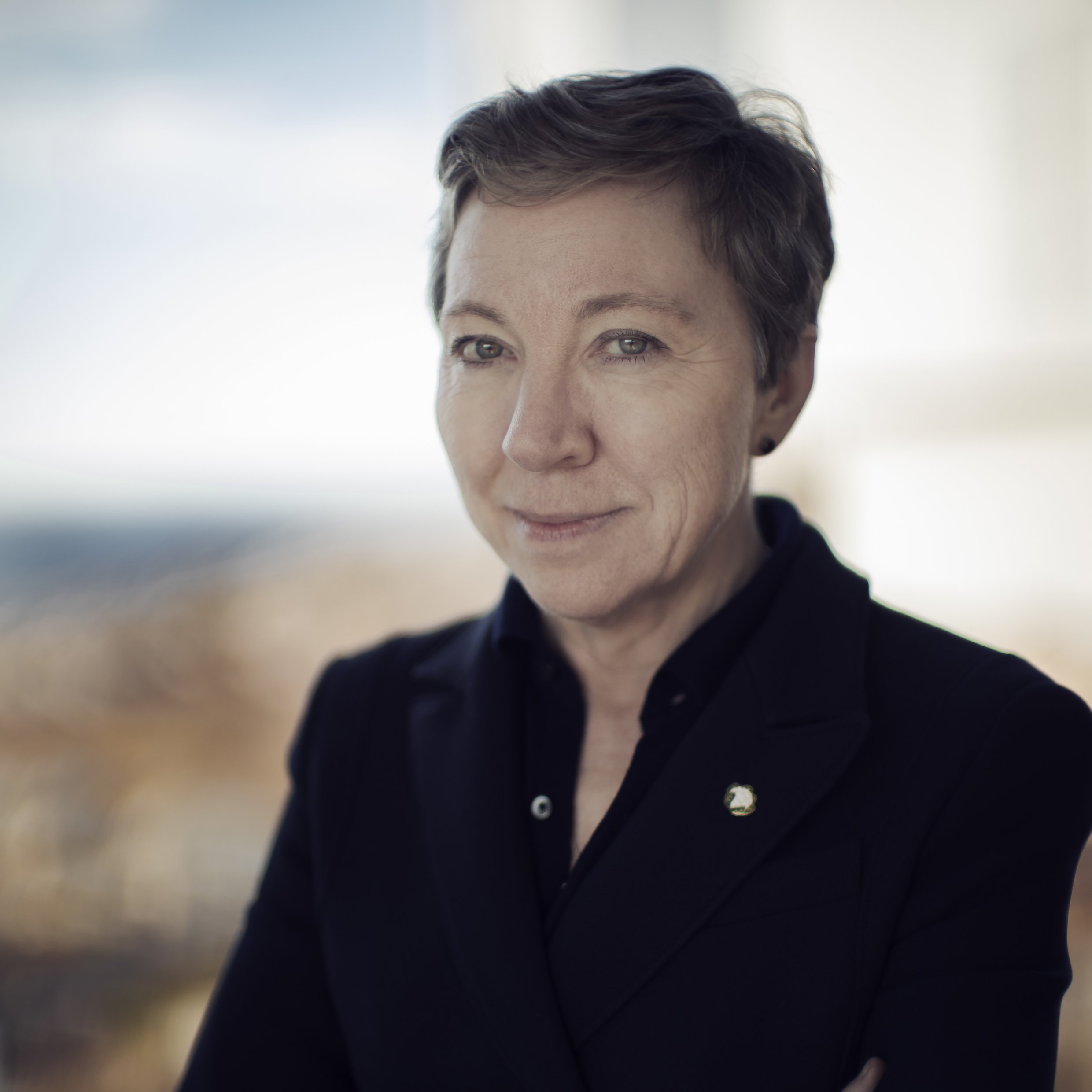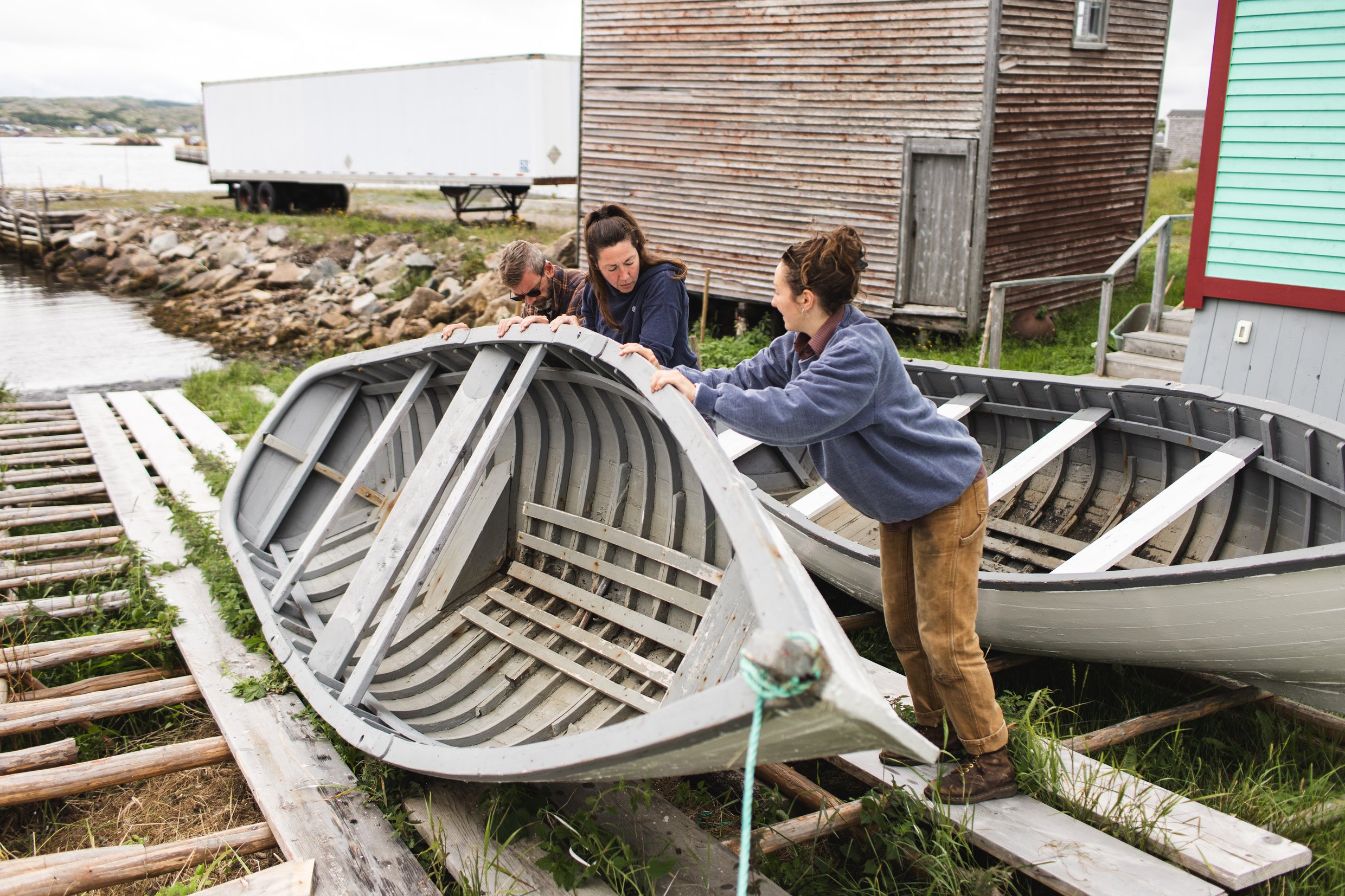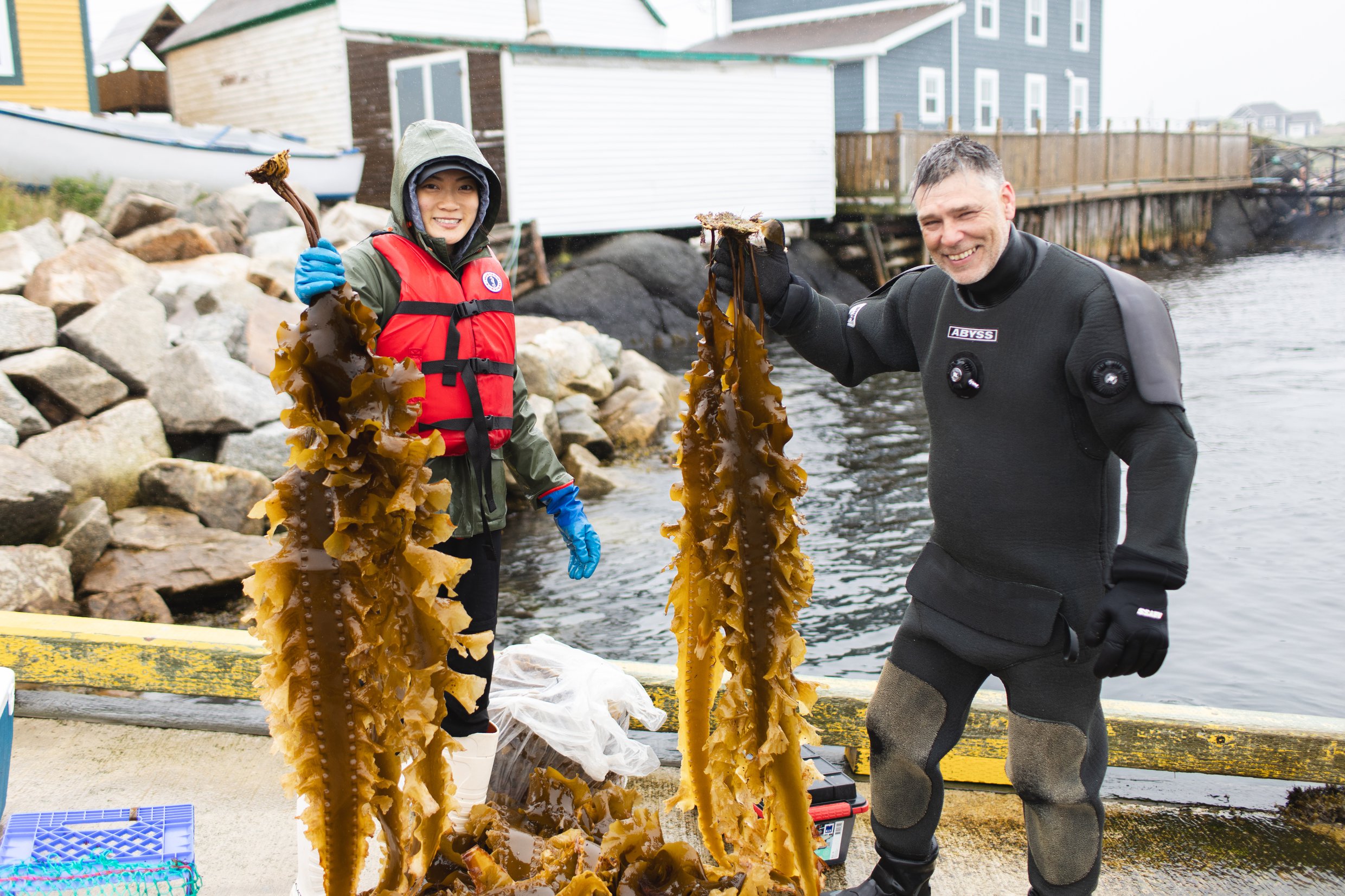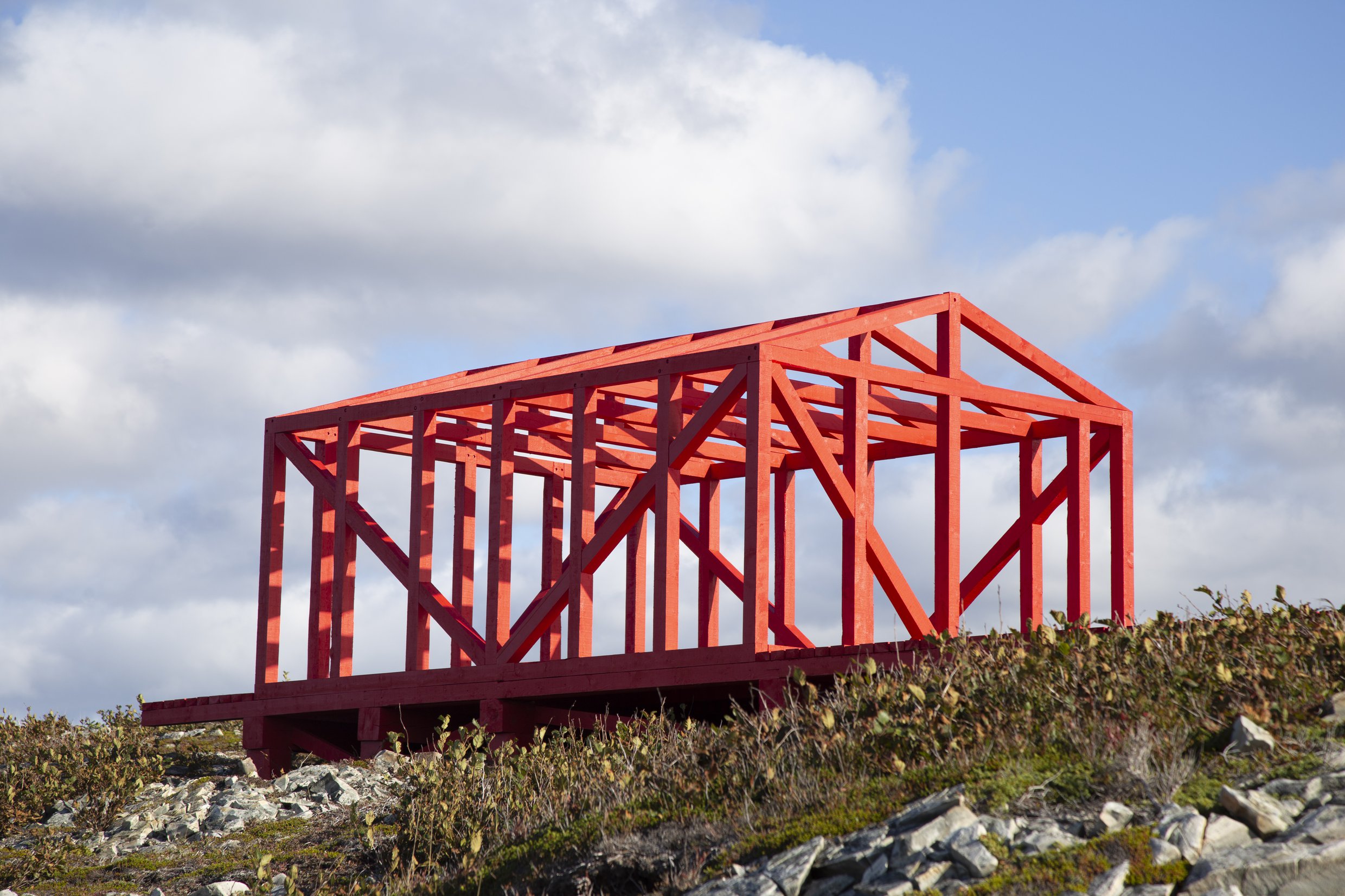"Culture is a human response to a place"

Interview with Zita Cobb, CEO and co-founder of Shorefast, Ottawa / Joe Batt's Arm, Canada, keynote speaker at the 56th CIMAM Annual Conference in Los Angeles, and new CIMAM Supporter.
Can you tell us about the origins of Shorefast and the initial vision behind its creation? What inspired you and your siblings to establish Shorefast in 2004?
In a way, a small island is a good proxy for a small planet. And so Fogo Island, this particular small island—which is not so small as it’s four times the size of Manhattan—has endured and flourished and struggled for centuries. And you can see that, apart from war that we fortunately haven’t had to live through, most things that happened in the world have manifested in one way or another in that little place.

That’s the magic of small islands: they are a complete entity onto themselves yet undeniably interconnected with the larger whole. The fundamental question that we are trying to resolve at this point in our human history is how the parts belong to the whole. How does a person relate to their local environment? How does that local place relate to the region? And so on.
I am an eighth-generation Fogo Islander. My ancestors emigrated from England and Ireland in the early 19th century to fish in Newfoundland on this little island.
As fishing families, we didn’t control access to the market; we traded with a merchant, and we were a very entrepreneurial community. People had a deep social logic, a deep ecological logic for making a living in the North Atlantic, and practically no economic logic. To survive in these centuries, the economic logic was actually less important than the ecological and social logic.
I am 65 years old, and I have lived in three centuries. For the first 10 years of my life, I lived on this island in what was a lot like the 19th century. We didn't have running water, access to healthcare, or much connection to the mainland, and my parents couldn’t read. When I was 10, the negative impact of the 20th century started to affect us with the industrialization of the fishery and the arrival of large shipping fleets.
Europeans had always come to fish, and that’s how we ended up there, but small-scale fishing turned into industrial-scale fishing. It didn’t take long for almost all the fish to be taken out of the ocean. This led to an economic and near-cultural collapse for us.
Art, in a way, acted like an electric eel in the pond – it activated local energies and brought Fogo Islanders together in what has become known as the Fogo Process. I experienced this when I was 10 years old. It helped the community unite during a difficult time to resist forced resettlement of the island. The community adapted by making slightly larger boats, enabling them to go further out to sea and fish for different species.
When I was 10 years old, my father told me that when I grew up, I had to learn, stay in school, and then leave the island and figure out how the money system works. He emphasized that if I didn’t understand the money system, it would ‘eat everything we love’. I followed his advice. I studied business, pursued a career in business, and made money from it. Being a relatively sane person, I took the money and came home to figure out how to use it to support the things we love.
Regarding the question of what inspired us to create Shorefast, my perspective is that everything a person needs can be found in place. We are physical and social creatures, meaning-seeking creatures – everything we need exists in place(s). There was a time when people believed that we all lived in a global village. This caused a place blindness. Our human and business systems have evolved as if place didn’t matter, leading to the failure of economies, communities, and cultures.
Upon returning home, we wanted to take a stand for this place that we love and has given us everything. Everything you need to know about me can be found in Fogo. It all began with the simple idea of boosting the economy in a way that supports the cultural and social development of the area. In a poem by Glenn Colquhoun, a New Zealand poet, it is said that walking upright is the art of using both feet—one for holding on and the other for stretching. This way, place can belong to the world, at least to some extent, on its own terms.

Shorefast's mission emphasizes the importance of community as the unit of change. Why do you believe community-based approaches are crucial for sustainable economic development?
Going back to the idea of humans as embodied beings, everything lands in a place, good or bad. Every government policy, every dream, everything lands in the places we live. I’m a big fan of the economist Raghuram Rajan who wrote a book called The Third Pillar, where he says that human societies rest on three pillars: markets, governments, and communities. Through neglect, by not understanding what we were doing, we humans have taken so many moves in the last 60 years that have hollowed out communities and left them as bundles of loose ends. Dysfunction at the community level equals dysfunction at all levels. We can have the best ideas in the world and the best leaders, but we humans don’t function if communities don’t function.
So, the community is the basic unit of design. In North America, we have built too many cities without considering that where we live is a kind of community, a social system.
Who are the stewards of nature? We are: the people who inhabit a particular place. When I say “community”, I am referring to a community that is rooted in a specific place, as place is where nature resides. Culture is a human response to a place. To me, “community” encapsulates both nature and culture. What more is there?

Can you share some key lessons from Fogo Island that other communities could learn from?
I believe the first and most important thing is to understand yourself as a community and know your assets. Sometimes, we use the wrong terms, and this leads us down the wrong path. For example, in business, we often refer to people and nature as resources. However, human beings and nature are assets, while money is a resource.
Resources must be deployed to support assets. We’ve all gotten caught up in this reductionist business way of understanding the world. I’m a business person, so I can say this from my own experience. In the business world, we look for ways to turn everything into money—that's the essence of business skills. The problem with all of this is that we’ve lost the ability to understand our real assets, which is why we’re in this climate mess.
For any community, the first question is: what are our assets? Something called asset-based community development, a well-known methodology, has some very beautiful questions: What do we know? What do we have? What do we like? What do we miss? And what can we do about it? These questions lead us to understand that, if these are our assets, we have to come together in this place to interact with the world in a way so that these assets are properly developed. And proper development means bringing out the potential of something in the way that the people who have that potential want to bring it out.
This is the opposite of extraction. When it’s done correctly and at the right scale, it’s regenerative. And I think a regenerative economy is possible. That's the main thing for communities to understand. If these are our assets and this is the way we want to move forward and develop, then you look at the world, and figure out how to harness those assets properly so that your community belongs to the greater whole on your own terms...
The entire world is made up of institutions, whether they are corporations, government departments, or museums. It’s like a whole system that optimizes for itself, and they are all kind of siloed. The question is how to reconcile the management of places and communities with the management of institutions. This can be seen in many ways, such as in museums, where there is a need to be more relevant and connected to the place where they are located. However, it’s not just museums; all of us human beings have tricked ourselves into thinking that the solutions lie within the institutions. We have overlooked the importance of the actual places.

Shorefast aims to build new models of place-based economic development. How do you envision these models contributing to a more equitable and regenerative global economy?
Whatever we do, every morning, we must wake up and ask ourselves: Who is this for? Maybe not everything is for everyone.
If it’s not for all the people then it at least needs to be open, it needs to serve directly or indirectly all the people, whoever they are, in a place
That’s what happens with an institution. It exists in a place. Most institutions have a greater reach through digital platforms and maybe multiple locations. But we all need to leave our offices and go out on the street and spend much time lying down on the road to understand the place from the ground up, and remake our work to absolutely serve and be useful in some way to all people in the place. What changes would we make to better meet people's needs? I believe that 90% of us would discover numerous improvements that need to be made.
We always face tensions around the rigor of professional disciplines that sometimes work for very few people because if you’re not educated in that discipline, you cannot enter.
You have to start over, start from this place, start by believing and seeing, because if you believe it, you see it—I’m not sure which way it goes, maybe it goes both ways—everything we need to live dignified lives is here.
And our job is to ask ourselves, “How can I be a better servant of what’s here?” and to believe that what’s here are the assets. These are the assets; I am a servant. An institution is a tool. It is a resource that can serve these assets.
So equitable means it’s simply for everybody here. At the root of ‘regenerative’ is understanding the externalities. What are the externalities of my work? The fact that we exist means we take up space and contribute in some way to carbon just by existing. And so, let’s make all of our work and existence count for other people.

When you founded Shorefast, your first project was the creation of the international residency program Fogo Island Arts. What was the impetus for this?
I believe that art serves as a precious asset for understanding the world. I also think there are various logic systems, and humans can make mistakes when we adhere narrowly to one logic system, such as an economic logic system.
Fogo Island was saved in the late 1960s due to the collective efforts of the National Film Board of Canada, the Memorial University of Newfoundland, and the people of the local community. This process was generative because different questions were asked.
The reductionist logic approach in the late 1960s, from a public policy perspective, would have been to relocate these people who lacked access to running water, education and healthcare and were now facing a shortage of fish.
When filmmakers with unique approaches and perspectives arrived, they were able to help uncover the true potential of the place by asking different questions. According to John McKnight, a pioneer in asset-based community development, artists are like reverse magicians because they make things appear that didn’t look like that before. And that made all the difference in that place that I love and work in, in 1968. And it’s the same thing now. It’s just a different way of seeing possibilities. A miracle is nothing more than a small change in the way you see something.
Shorefast has recently become a Supporter of CIMAM. How do you expect this partnership with CIMAM to contribute to the Shorefast project and the CIMAM community?
I believe CIMAM is a form of organized active learning. The question is: How good are we, the individual members, at activating together?
Since I’m new, I’m still getting familiar with the platform and how it operates, but I think the main goal is to figure out the best way to organize ourselves for learning and adapting. Sometimes, and maybe this is part of the challenge in the institutional world, we have learning that must be distilled and communicated with such incredible rigor that it takes too long. By the time I’ve learned from you, if I go through the usual channels and processes, the learning isn’t fast enough for the speed to the problems or for the potential we have to contribute to preventing problems.
Therefore, it’s important to stay updated on new learning, and I’m eager to learn how CIMAM achieves this and how we can improve it.
We have digital platforms and other methods that don’t require waiting for an annual meeting. For me, CIMAM is a way for us- for this part- to belong to the world.
I'm excited by the network that exists in CIMAM and look forward to exploring how we can facilitate more dynamic exchanges, especially in our collective efforts towards sustainability, which involves actively living, adapting, adjusting and persevering.
What key messages do you hope to convey to the CIMAM Annual Conference attendees about sustainability and community-based development?
Cultural institutions are part of the connective web of the world. And the professionals who work in them are more than ambassadors of these places. They are synthesizers of these places. And since we have a mission—I think all of us, whether we say it or not—to remake the world with places in it, we need a different connective web. Not everything that’s going to affect somebody’s life has to be something that comes in through the front door or the back door of a giant global corporation.
To be more effective together, we must ask ourselves what we are optimizing for. Cultural preservation? If that seems to create tension and possibly be in conflict with others who are optimizing economic outcomes, maybe that should tell us that we have a superficial understanding what the work. Maybe we all need to go down a few levels of the so-called iceberg to understand what it is that we’re really trying to do.
Maybe we don’t have a shared understanding of progress or development?
We need to reclaim the word development and give it a new meaning. What is economic development without cultural progress and social progress? We know what it is. It is extractive. We are living through it. So, what is proper development, and what is real progress?